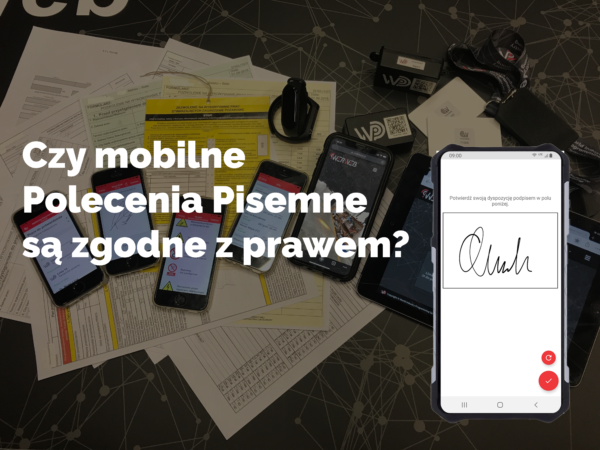Legal analysis of biometric signature and mobile work permit in InnerWeb application

With the increasing digitization of business processes, the question of the legal aspects of using new technologies in the workplace is increasingly being asked. One such solution is the InnerWeb application, which makes it possible to issue mobile work permits using a biometric signature. The purpose of this article is to analyze whether such a method of signing documents meets the requirements of written form in Polish law.
Definitions and legal context
Written form in Polish law:
According to Article 78 § 1 of the Civil Code (Civil Code), to be in writing it is sufficient to affix one’s own signature to a document covering the contents of a statement of intent. A document can be any medium of information that makes it possible to read its contents.
Biometric Signature:
A biometric signature is a technology that enables a handwritten signature to be made on a touchscreen device that reflects the signer’s features. Such signatures are increasingly used in banking and delivery processes.
Legal analysis
- Does the biometric signature meet the requirements of written form?
According to InnerWeb’s delegated procedures, a biometric signature made with a finger on the device’s screen sufficiently individualizes the signer. The technology records both the shape and speed of the signature, which allows it to be verified. As a result, a biometric signature made using the InnerWeb app can be considered a handwritten signature.
- Requirements of the written form in the context of the Decree of the Minister of Energy dated August 28, 2019.
The Ordinance on Health and Safety at Work on Power Equipment requires that operational work posing a special hazard be carried out on the basis of a “written order.” However, the wording of the regulation does not specify that this order must be in writing within the meaning of Article 78 § 1 of the Civil Code.
- Interpretations of doctrine and case law
Doctrine and case law point to the difference between writability and written form. Writability is not equated exclusively with the paper medium. The most important feature of writability is the fixation of thoughts in graphic form, which does not exclude the use of electronic media.
Conclusions and recommendations
- Biometric signature as a written form:
Biometric signatures made using the InnerWeb application meet the requirements of a handwritten signature, which means that commands issued using this application can be considered to meet the written form requirement.
- Recommendations to eliminate uncertainty:
To completely eliminate doubts about compliance with the requirements of the written form, it is recommended:
- Enabling the order to be stamped with a qualified electronic signature.
- Introducing a procedure in which the generated order is printed and stamped with a handwritten signature.
Application of the above recommendations will ensure that the orders issued comply with legal requirements, eliminating the legal risks associated with new signature technologies.
Summary
Legal analysis indicates that the biometric signature in the InnerWeb application can be considered compliant with written form requirements. Nevertheless, to avoid potential legal problems, it is recommended to implement additional security measures, such as a qualified electronic signature or a traditional handwritten signature on a printed document.

